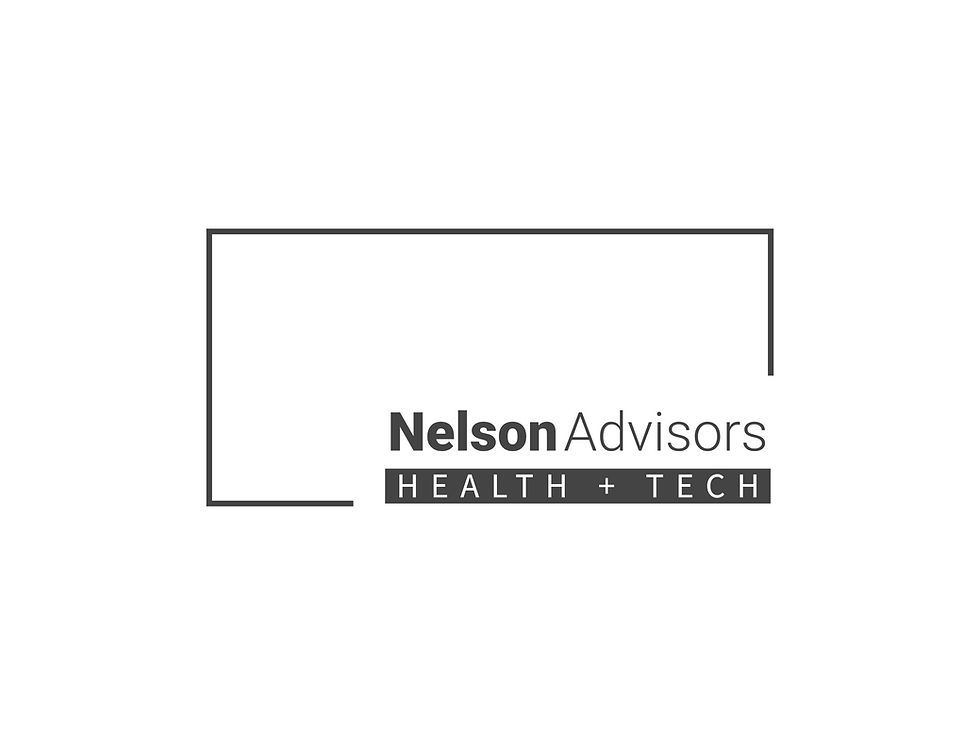First principles thinking in healthcare technology
- Lloyd Price
- Feb 8
- 8 min read
Updated: Feb 9

Exec Summary
First principles thinking is a powerful problem-solving technique that involves breaking down complex problems into their most fundamental truths and then reasoning up from there to develop new solutions. It encourages you to challenge assumptions and think outside the box, rather than relying on existing models or conventional wisdom.
First principles thinking in healthcare technology involves breaking down complex problems into their fundamental truths. Here are some key first principles relevant to healthcare technology:
Patient-centricity: Healthcare technology should ultimately serve the needs of the patient. All solutions should prioritise patient safety, well-being, and improved outcomes.
Data as a Foundation: Healthcare generates vast amounts of data. Leveraging this data ethically and effectively is crucial for improving care, research, and system efficiency.
Interoperability: Healthcare systems must seamlessly share information across different providers, devices, and platforms to ensure continuity of care and avoid duplication of effort.
Accessibility and Equity: Healthcare technology should be accessible to all patients, regardless of their socioeconomic status, location, or technical literacy.
Transparency and Trust: Openness and transparency in data usage, algorithm development, and decision-making processes are essential for building trust between patients, providers, and technology developers.
Ethical Considerations: Healthcare technology must be developed and deployed ethically, respecting patient privacy, autonomy, and human dignity.
Applying first principles in healthcare technology can lead to:
More effective and efficient healthcare delivery: By streamlining processes, improving data utilisation, and personalising care.
Enhanced patient experience: By providing patients with greater access to information, control over their health, and improved communication with their care team.
Accelerated medical research and innovation: By enabling faster data analysis, more accurate diagnoses, and the development of new treatments and therapies.
A more sustainable healthcare system: By reducing waste, improving resource allocation, and promoting preventative care.
By consistently questioning assumptions and focusing on these fundamental truths, healthcare technology can truly transform the way we deliver care and improve health outcomes for all.
Nelson Advisors
Healthcare Technology > Mergers, Acquisitions, Growth, Strategy, Investments http://www.nelsonadvisors.co.uk/
We work with Healthcare Technology founders, owners and investors to assess whether they should 'Build, Buy, Partner, Invest or Sell' in order to maximise shareholder value and investment returns. lloyd@nelsonadvisors.co.uk/
We regularly share our thoughts on Healthcare Technology mergers, acquisitions, growth, strategy, investments, market insights & predictions on our blog https://www.healthcare.digital
We publish a weekly LinkedIn Newsletter covering Healthcare Technology mergers, acquisitions, growth, strategy, investments, insights & predictions. Subscribe Today! https://lnkd.in/e5hTp_xb
#HealthTech #DigitalHealth #HealthIT #NelsonAdvisors #Mergers #Acquisitions #Growth #Strategy #Innovation #NHS #VentureCapital #PrivateEquity #UK #Europe

Key aspects of first principles thinking
First principles thinking is a powerful problem-solving technique that involves breaking down complex problems into their most fundamental truths and then reasoning up from there to develop new solutions. It encourages you to challenge assumptions and think outside the box, rather than relying on existing models or conventional wisdom.
Here's a breakdown of the key aspects of first principles thinking:
1. Deconstructing to Fundamental Truths:
Identify and define your current assumptions: Start by clearly stating the problem you're trying to solve and the assumptions you're making about it.
Break down the problem into its fundamental principles: Question every assumption and break down the problem into its most basic truths. Ask "why" repeatedly until you reach a point where you can't break it down further. These fundamental truths are your first principles.
2. Reasoning Up from First Principles:
Create new solutions from scratch: Once you have identified the first principles, you can start to reason up from there to develop new solutions. This involves thinking creatively and exploring different possibilities, without being constrained by existing models or conventions.
Challenge conventional wisdom: First principles thinking often leads to solutions that are counterintuitive or that challenge conventional wisdom. This is because it encourages you to think outside the box and to question everything.
Benefits of First Principles Thinking:
Innovation: First principles thinking can help you to develop truly innovative solutions to complex problems.
Clarity: By breaking down problems into their fundamental truths, you can gain a deeper understanding of the issues involved.
Problem-solving: First principles thinking can be a powerful tool for solving problems that seem intractable.
Decision-making: By considering the fundamental principles involved, you can make better decisions.
Examples of First Principles Thinking:
Elon Musk's SpaceX: Musk used first principles thinking to revolutionize the space industry. He questioned the assumption that rockets had to be expensive and disposable, and instead reasoned that they could be made much cheaper by reusing them.
Airbnb: The founders of Airbnb used first principles thinking to challenge the assumption that people would not want to stay in strangers' homes. They realised that people were often looking for more affordable and unique accommodation options, and built a platform that connected travellers with homeowners.
How to Apply First Principles Thinking:
Clearly define the problem: What are you trying to solve?
Identify your assumptions: What are you taking for granted?
Break down the problem into its fundamental principles: Ask "why" repeatedly until you reach the most basic truths.
Reason up from the first principles: How can you combine these truths to create new solutions?
Challenge conventional wisdom: Are there any assumptions you need to question?
Test your solutions: Do your solutions work in practice?
First principles thinking is a valuable tool for anyone who wants to solve complex problems, innovate, and make better decisions. It encourages you to think critically and creatively, and to challenge the status quo.

Here are some successful examples of first principle thinking in healthcare technology:
Remote patient monitoring: Companies like Livongo and Omada Health have used first principles thinking to develop remote patient monitoring solutions that are more effective and engaging than traditional methods. They started by questioning the fundamental assumptions about how healthcare is delivered, and then used technology to create new models of care that are more convenient, affordable, and personalised.
Artificial intelligence (AI) for diagnostics: Companies like PathAI and IDx Technologies are using AI to improve the accuracy and efficiency of disease diagnosis. They are using first principles thinking to develop AI algorithms that can analyse medical images and other data to identify patterns that are too subtle for humans to see.
Personalised medicine: Companies like 23andMe and Foundation Medicine are using first principles thinking to develop personalised medicine solutions that are tailored to the individual patient. They are using genetic testing and other data to identify the specific causes of a patient's disease, and then developing treatments that are most likely to be effective.
Virtual reality (VR) for surgery: Companies like Surgical Theater and Osso VR are using VR to improve the training and planning of surgical procedures. They are using first principles thinking to develop VR simulations that are more realistic and immersive than traditional methods, which can help surgeons to better prepare for complex procedures.
Blockchain for healthcare: Companies like Mediledger and BurstIQ are using blockchain technology to improve the security and interoperability of healthcare data. They are using first principles thinking to develop blockchain solutions that can help to protect patient privacy and make it easier for healthcare providers to share data.
These are just a few examples of how first principles thinking is being used to develop innovative healthcare technology solutions. By questioning the fundamental assumptions about how healthcare is delivered, and then using technology to create new models of care, these companies are making a real difference in the lives of patients.

First principle thinking is a powerful tool, but it's not without its challenges, especially in a complex field like healthcare technology. Here are some of the key hurdles:
Resistance to Change: Healthcare is a field steeped in tradition and established practices. Challenging these norms, even with well-reasoned arguments, can meet with significant resistance from clinicians, administrators, and regulators.
Complexity of Healthcare: Healthcare involves a multitude of interconnected factors, from patient needs and clinical workflows to regulatory requirements and reimbursement models. Isolating truly fundamental principles can be incredibly difficult.
Data Dependence: First principle thinking often relies on robust data to validate assumptions and test solutions. In healthcare, data can be fragmented, incomplete, or difficult to access, hindering the process.
Ethical Considerations: Healthcare innovations must prioritize patient safety and well-being. This requires careful consideration of ethical implications and potential unintended consequences, which can add complexity to first principle thinking.
Regulatory Hurdles: Healthcare is heavily regulated, and new technologies must navigate a complex approval process. This can slow down innovation and make it difficult to implement solutions developed through first principle thinking.
Interoperability Challenges: Healthcare systems often lack seamless data exchange, making it difficult to integrate new technologies and solutions. This can limit the impact of first principle thinking in creating truly transformative solutions.
Financial Constraints: Developing and implementing new healthcare technologies can be expensive. This can be a barrier to innovation, especially for solutions that challenge existing business models.
Despite these challenges, first principle thinking remains a valuable approach for driving innovation in healthcare technology. By carefully considering these hurdles and developing strategies to overcome them, healthcare innovators can leverage this powerful tool to create truly transformative solutions that improve patient care and outcomes.

First principle thinking is a powerful tool for driving innovation in healthcare technology. By questioning fundamental assumptions and challenging conventional wisdom, it can lead to the development of truly transformative solutions that improve patient care and outcomes.
Here are some of the key trends and opportunities that are likely to shape the future of first principle thinking in healthcare technology:
Increased focus on patient-centered care: First principle thinking can be used to develop new models of care that are more personalised, convenient, and affordable for patients. This could involve using technology to deliver care remotely, or developing new ways to engage patients in their own care.
Greater use of artificial intelligence (AI): AI has the potential to revolutionize healthcare by automating tasks, improving diagnostics, and personalising treatments. First principle thinking can be used to develop new AI algorithms that are more accurate, efficient, and ethical.
Emphasis on data interoperability: Healthcare systems are increasingly moving towards a model of interoperability, where data can be easily shared between different providers and systems. This will make it easier to develop and implement new solutions based on first principle thinking.
Growing use of virtual reality (VR) and augmented reality (AR): VR and AR have the potential to transform healthcare by providing immersive training experiences for surgeons, and by creating new ways to deliver therapy and rehabilitation. First principle thinking can be used to develop new VR and AR applications that are more effective and engaging.
Increased collaboration between healthcare providers and technology companies: First principle thinking is most effective when it is applied collaboratively. In the future, we are likely to see more partnerships between healthcare providers and technology companies, working together to develop new solutions that address the most pressing challenges in healthcare.
Overall, the future of first principle thinking in healthcare technology is bright. By questioning fundamental assumptions and challenging conventional wisdom, we can develop new solutions that improve patient care, reduce costs, and make healthcare more accessible to everyone.
Nelson Advisors
Healthcare Technology > Mergers, Acquisitions, Growth, Strategy, Investments http://www.nelsonadvisors.co.uk/
We work with Healthcare Technology founders, owners and investors to assess whether they should 'Build, Buy, Partner, Invest or Sell' in order to maximise shareholder value and investment returns. lloyd@nelsonadvisors.co.uk/
We regularly share our thoughts on Healthcare Technology mergers, acquisitions, growth, strategy, investments, market insights & predictions on our blog https://www.healthcare.digital
We publish a weekly LinkedIn Newsletter covering Healthcare Technology mergers, acquisitions, growth, strategy, investments, insights & predictions. Subscribe Today! https://lnkd.in/e5hTp_xb
#HealthTech #DigitalHealth #HealthIT #NelsonAdvisors #Mergers #Acquisitions #Growth #Strategy #Innovation #NHS #VentureCapital #PrivateEquity #UK #Europe


















































Comments